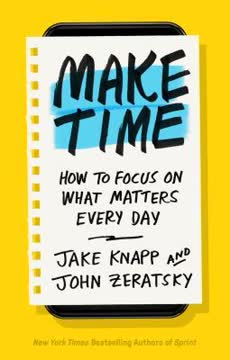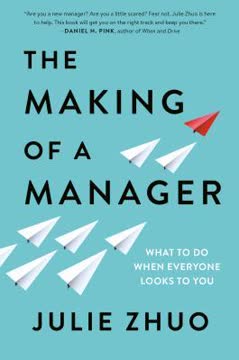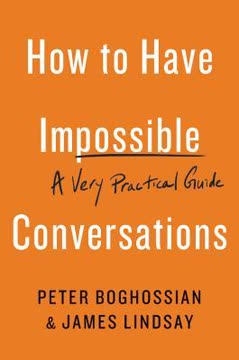Key Takeaways
1. Creativity is a process, not an event: The Solution Finder framework
Innovation is a process not an event.
The Solution Finder framework provides a structured approach to creative problem-solving. It consists of four steps:
- Understanding: Define the challenge
- Ideation: Generate ideas
- Analysis: Evaluate ideas
- Direction: Implement the solution
This process combines divergent thinking (expanding possibilities) and convergent thinking (narrowing options) to ensure a balanced approach to innovation. By following these steps, individuals and teams can systematically tackle problems, generate novel solutions, and implement innovative ideas.
Benefits of the Solution Finder:
- Overcomes mental blocks and biases
- Encourages exploration of multiple perspectives
- Balances creativity with practicality
- Provides a repeatable method for consistent innovation
2. Overcome thinking errors: Selective, reactive, and assumptive thinking
When you assume you make an ass of u and me.
Thinking errors hinder creativity and lead to poor decision-making. The three main types of thinking errors are:
- Selective thinking: Focusing only on information that confirms existing beliefs
- Reactive thinking: Making hasty decisions based on immediate stimuli
- Assumptive thinking: Accepting beliefs without evidence
To overcome these errors:
- Challenge your assumptions regularly
- Seek disconfirming evidence
- Take time to reflect before making decisions
- Use diverse perspectives to broaden your thinking
By recognizing and addressing these thinking errors, you can open your mind to new possibilities and enhance your creative problem-solving abilities.
3. Understanding: Define and reframe the challenge
The way you define your problem sets the principal direction for all your creative sweats and struggles.
Clearly defining the challenge is crucial for effective problem-solving. The Understanding stage involves:
- Examining the brief in detail
- Gathering relevant information
- Challenging assumptions
- Reframing the problem from multiple angles
Tools for understanding:
- Define and Understand Canvas
- 5W1H Canvas (Who, What, Where, When, Why, How)
- Changing Perspectives Canvas
By thoroughly exploring the problem space, you can uncover hidden aspects of the challenge and identify more innovative solutions. Reframing the problem often leads to breakthrough insights and helps avoid solving the wrong problem.
4. Ideation: Generate ideas through structured techniques
Creativity can solve almost any problem… the defeat of habit by originality, overcomes everything.
Structured ideation techniques help overcome mental blocks and generate a wide range of ideas. Key principles for effective ideation:
- Go for quantity: Aim for a high volume of ideas
- Welcome wild ideas: Embrace unconventional thinking
- Defer judgment: Avoid criticizing ideas prematurely
- Build on others' ideas: Combine and improve concepts
Ideation tools:
- Reverse Brainstorming Canvas
- Metaphoric Thinking Canvas
- Combinational Creativity Canvas
These techniques encourage divergent thinking and help teams break free from conventional approaches. By creating a safe space for creativity and using structured methods, you can consistently generate innovative ideas.
5. Analysis: Evaluate ideas using both logic and intuition
Innovation is saying 'no' to 1,000 ideas.
Balanced idea evaluation combines rational analysis with intuitive judgment. The Analysis stage involves:
- Sorting ideas into categories
- Screening ideas using criteria
- Selecting the best ideas for further development
Tools for analysis:
- Heart/Head Pros/Cons Canvas
- Force Field Evaluation Canvas
Key considerations:
- Use both quantitative and qualitative assessment
- Consider feasibility, acceptability, and desirability
- Involve diverse perspectives in the evaluation process
- Be open to refining and combining ideas
By using a structured approach to analysis, you can identify the most promising ideas while maintaining objectivity and avoiding premature judgments.
6. Direction: Implement and refine your solution
There are no old roads to new directions.
Effective implementation turns ideas into reality. The Direction stage involves:
- Developing an action plan
- Allocating resources
- Communicating the plan to stakeholders
- Implementing and monitoring progress
- Refining the solution based on feedback
Tools for direction:
- Building Solutions Canvas
- SMART Goals Canvas
- Action Plan Canvas
Key principles:
- Break down the implementation into manageable steps
- Anticipate and plan for potential obstacles
- Remain flexible and open to adjustments
- Celebrate milestones and learn from setbacks
Continuous improvement is essential for long-term innovation success. Regularly review and refine your solution to ensure it remains effective and relevant.
7. Commit to thinking differently: Reason proactively and make time for creativity
Creativity can happen in many ways. The ability to make connections is accountable for vast quantities of novel ideas across every field.
Proactive reasoning involves consciously managing your thinking processes. To cultivate creative thinking:
- Use the Decision Radar tool to assess your thinking patterns
- Set commitments to change using the Commitment Traffic Lights exercise
- Make time for creativity in your daily routine
Strategies for creative thinking:
- Find your focus: Schedule uninterrupted time for deep thinking
- Chunk tasks: Break projects into manageable pieces
- Practice purposeful daydreaming: Allow your mind to wander productively
By committing to these practices, you can develop a more flexible and innovative mindset, leading to increased creativity in both personal and professional contexts.
8. Creative leadership: Foster an innovative culture
Leadership is the art of giving people a platform for spreading ideas that work.
Creative leaders cultivate an environment where innovation thrives. Key aspects of creative leadership:
- Champion a meaningful mission and vision
- Embrace failure as a learning opportunity
- Make play a priority in the workplace
- Maintain optimism and a can-do spirit
- Implement supportive systems for experimentation
Strategies for fostering innovation:
- Encourage risk-taking and experimentation
- Celebrate both successes and valuable failures
- Create spaces and times for creative play
- Lead by example in embracing new ideas
By cultivating a culture of innovation, leaders can empower their teams to generate and implement creative solutions consistently, driving long-term success and adaptability in a rapidly changing world.
Last updated:
Review Summary
The Creative Thinking Handbook receives mostly positive reviews, with readers praising its practical approach to fostering creativity in business. Many appreciate the exercises, illustrations, and real-world examples provided. Reviewers highlight the book's emphasis on systematic problem-solving, brainstorming techniques, and innovative thinking strategies. Some readers find the content repetitive or familiar, but overall, it's recommended for entrepreneurs and business leaders seeking to enhance their creative problem-solving skills and cultivate an innovative workplace culture.
Similar Books
Download PDF
Download EPUB
.epub digital book format is ideal for reading ebooks on phones, tablets, and e-readers.











